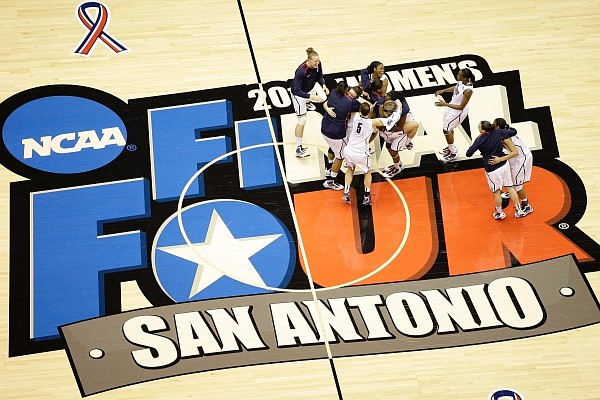***********************************************
"I'm calling out the NCAA. There's no excuse for that and it's unacceptable and they need to do better. I mean, what're we gonna do with 5 lb dumbbells?"
— UConn Videos (@SNYUConn) March 19, 2021
Christyn Williams talks about the disparities in the bubbles for the men's teams and women's teams: pic.twitter.com/g369i2P12l
Worth watching https://t.co/mFGB4aoRb6
— Alexa Philippou (@alexaphilippou) March 19, 2021
1. The first of those would be against 22-6 High Point University.
2. Then they would play the winner of Syracuse (14-8) vs South Dakota State (21-3).
3. Assuming the Huskies win those 2, they would play Iowa (18-9) or Central Michigan (18-8) or Kentucky (17-8) or Idaho (22-3).
The other 7 teams in UConn's initial bracket have a combined record of 132-45. That seems like a lot of losses. Syracuse is 14-8..? Iowa, Central Michigan and Kentucky all have 8 or 9 losses. Even Tennessee is 16-7. Also in their bracket is Middle Tenn. at 17-7, Virginia Tech at 14-9 and Michigan at 14-5.
Is it me or did a whole lot of teams have a whole lot of losses.... and still make the Big Dance? Just more weirdness in a weird year..?
Go Huskies..!!
Many basketball players find that the transition from high school to college is a bigger jump than they realized, even though they’ve all been told that it will be a big jump. Another transition is going to the NCAA tournament. New players have the whole season to get used to the faster speed of the college game, but few are totally ready for the increased media hype of the NCAA tournament, coupled with the “lose – and – go – home” pressure. It helps if you’ve been there before.
In a typical year, a team returning to the tournament has sophomores, juniors and seniors, and maybe a few grad transfers all of whom have experience with the tournament, and only a handful of freshmen who are experiencing this for the first time.
This is not a typical year. The tournament was canceled last year, so that means only juniors and seniors have NCAA experience, while both the freshman and sophomore classes will be there for the first time. (It is actually a little more complicated than this when it comes to transfers who may have transferred from a school that made the tournament or maybe from one who did not. My numbers reflect this.)
I looked at the top eight teams, to see how much experience each team has. I looked at the current roster size and determined which of the players on the roster have previously competed in the NCAA tournament.
Ignoring transfers, and this year’s special situation where some high school players have become eligible, one might guess that if all class sizes were equal, half the players would be juniors and seniors. If you then factor in the common situation where a larger than average class works its way through the years, and becomes stronger as juniors and seniors, you might guess that top teams might have a little higher likelihood of larger than average junior or senior classes, so you might guess that the proportion of juniors and seniors would tend to be a little more than 50%.
Interestingly, only one of the teams in the top eight has more than 50% of the roster with NCAA experience. Texas A&M is also an interesting roster because of the large number of transfers. More than half the players came to TAMU from other schools: Tennessee, Arkansas, Minnesota, Midland College, Notre Dame, Colorado state, Louisville, and Rutgers.
Every other one of the top eight teams has fewer than half the roster with NCAA experience, ranging from six players at Baylor down to only three at UConn. How much of a factor will this lack of experience be in this tournament?
Roster size | NCAA Experience | Proportion | |
Texas A&M | 15 | 8 | 53% |
Baylor | 13 | 6 | 46% |
South Carolina | 11 | 5 | 45% |
Stanford | 14 | 6 | 43% |
Maryland | 11 | 4 | 36% |
Louisville | 12 | 4 | 33% |
NC State | 13 | 4 | 31% |
UConn | 12 | 3 | 25% |






No comments:
Post a Comment